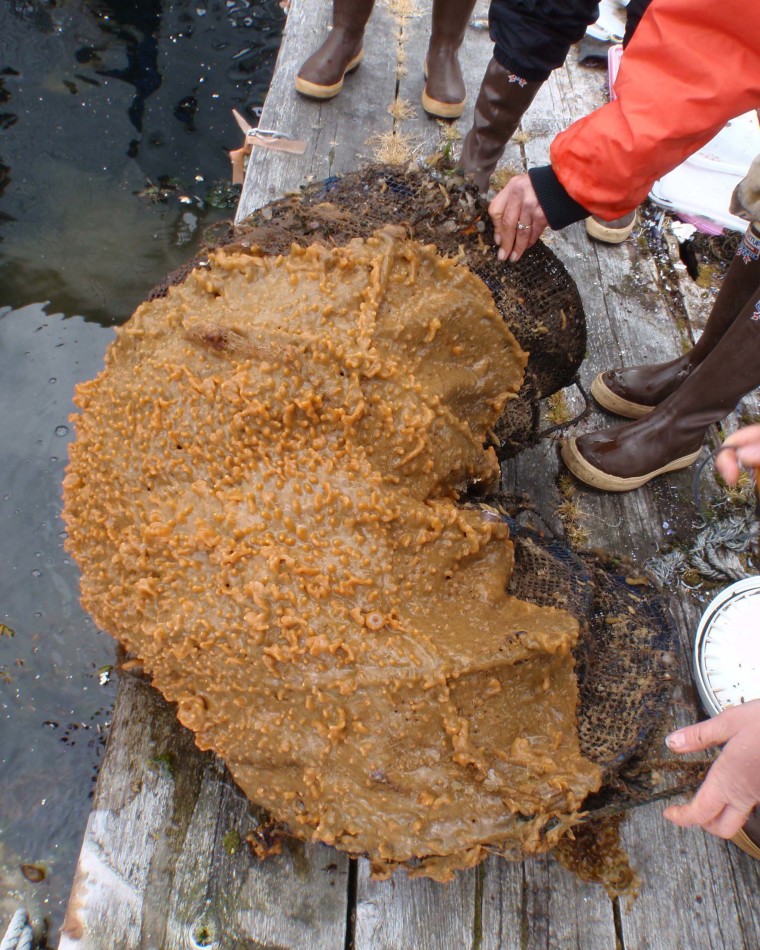Researchers in Alaska are planning a strategy to attack an invasive species with a heck of a nasty nickname: rock vomit.
Known scientifically as Didemnum vexillum, it's a type of sea squirt discovered in a harbor near Sitka last June — the first confirmation of the non-native anywhere in Alaska.
Rock vomit is so named for its penchant for spreading over hard surfaces such as piers, ship hulls, large seashells and rocks. It feeds on the tiny plankton and decaying plant material it filters from seawater, and can be lethal to other creatures — including commercially important species of fish.
"It’s a crazy organism," Linda Shaw, a biologist with the National Oceanic and Atmospheric Administration, said in a NOAA release. "It smothers other creatures while producing acidic toxins that in turn prevent anything from growing on it.
"Rock vomit creates a type of barrier between groundfish and their food," she added. "It’s been causing problems worldwide."
Divers searched the harbor last fall and again in January but could not cover the entire area due to the depths.
That led to the deployment of a remotely operated submersible, which videotaped much of the area and areas just outside.
"We can say that there are no big infestations outside the harbor," said Shaw. "But there are some things we want to take a closer look at as we review the video."
Once that review is complete, NOAA and state officials will launch an eradication campaign.
Maine in 1993 became the first state to detect rock vomit, which was probably introduced by ships dumping their water ballast. Since then the species has spread to other parts of New England.
On the West Coast, California, Oregon and Washington also have infestations.
